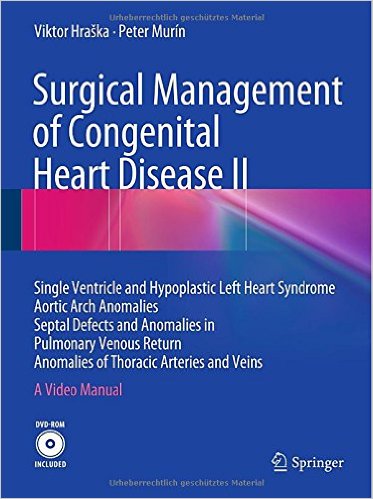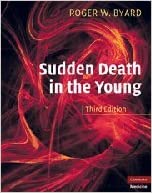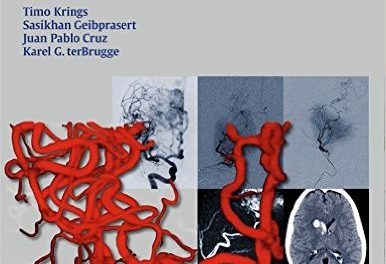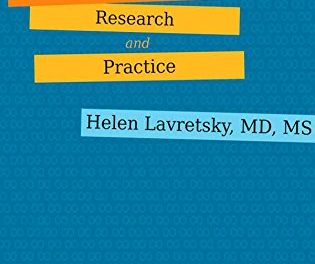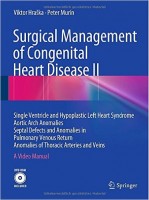 Authors: Viktor Hraska, MD; and Peter Murlin, MD
Authors: Viktor Hraska, MD; and Peter Murlin, MD
Publisher: Springer International Publishing – 303 pages
Book Review by: Nano Khilnani
This is an amazing book, with real-life, full-color photos of a large number of actual surgical procedures performed on the heart and other parts of the cardiovascular system of patients, particularly children. I believe one of the best ways of learning is seeing, and this book provides you the visuals.
This book has been written for pediatric cardiologists and cardiovascular surgeons, anesthetists, intensivists. perfusionists, and of course, pediatricians. It is also for medical students, residents, nurses, and others interested in or involved in the care of children with various forms of congenital heart disease, disorders, and anatomical / physiological abnormalities.
What makes this book even more valuable is that three DVDs are provided for your use, attached on the inside front and inside back covers of the book: DVD 1 for chapters 1 through 4; DVD 2 for chapter 5; and DVD 3 for chapters 6 through 8. And learning surgery is even better through viewing videos and listening to the descriptions than just seeing still photos.
The focus of this book is congenital heart disease, and its coverage within this area is fairly broad, as you can glean from the titles of its eight chapters below:
- Single Ventricle
- Hypoplastic Left Heart Syndrome
- Coarctation of the Aorta
- Interruption of the Aortic Arch
- Septal Defects
- Anomalies in Pulmonary Venous Return and Cor Triatriatum
- Vascular Rings and Pulmonary Artery Sling with Tracheal Stenosis
- Anomalous Left Coronary Artery Originating from the Pulmonary Artery
Each chapter of this book contains the following main components:
- Chapter Contents
- Introduction
- Anatomy
- Topics of Discussion
- Indication for Surgery
- Preparatory Steps
- Operative Approach and Cardiopulmonary Bypass Strategy
- Patient Characteristics
- DVD Clips
- Recommended References
In many chapters, multiple cases are shown, so some of the components are shown again for each patient.
The coverage of this book also includes some rare heart defects and problems of interest and help to cardiac surgeons. Some of these are:
- Biventricular management of hypoplastic left heart complex
- Complete atrioventricular septal defect
- Nikaidoh operation for the transposition of the great arteries with pulmonary stenosis
- Pulmonary artery sling
Let’s take a look at chapter 5, Septal Defects. A common kind of septal defect is the atrial septal defect or ASD for short. Wikipedia defines it as “a congenital heart defect in which blood flows between the atria (upper chambers) of the heart.”
It elaborates: “normally, the atria are separated by a dividing wall, the interatrial septum. If this septum is defective or absent, then oxygen-rich blood can flow directly from the left side of the heart to mix with the oxygen-poor blood in the right side of the heart, or vice versa.”
“This can lead to lower-than-normal oxygen levels in the arterial blood that supplies the brain, organs, and tissues. However, an ASD may not produce noticeable signs or symptoms, especially if the defect is small.”
In the Introduction subsection for Atrial Septal Defect, the authors describe it as “an opening in the interatrial septum. According to its location relative to the fossa ovalis and embryogenesis, the general categories of atrial septal defects are:
- Common atrium
- Coronary sinus defect
- Primum atrial septal defect
- Secundum atrial septal defect
- Sinus venous defect
How are atrial septal defects corrected with surgery? In the Indication for Surgery section, the authors write: “Usually the closure of atrial septal defect is indicated at a preschool age, unless the patient is symptomatic during infancy. Currently, the vast majority of atrial septal defects are closed interventionally.” They then go on to specify and discuss the circumstances under which surgery needs to be performed for the other four categories.
The authors then discuss the surgical details in the Approach to Cardiopulmonary Bypass Surgery section, and present the characteristics of a five-year old patient – who was found to have secundum atrial septal defect – in the Patient Characteristics section. The steps to the operation are shown in five DVD clips, with the third one showing the closure of the atrial septal defect.
This is an outstanding book on surgical steps to correct congenital heart defects, which comes with useful DVDs. It’s well organized, thorough in coverage, containing a lot of details, and most importantly, provides the photos and videos that are so critical to thorough learning and understanding of life-saving surgical procedures.
Editors:
Viktor Hraska, MD, PhD works in the Department of Cardiac Surgery at the German Pediatric Heart Centre in Sankt Augustin, Germany.
Peter Murlin, MD works in the Department of Cardiac Surgery at the German Pediatric Heart Centre in Sankt Augustin, Germany.

